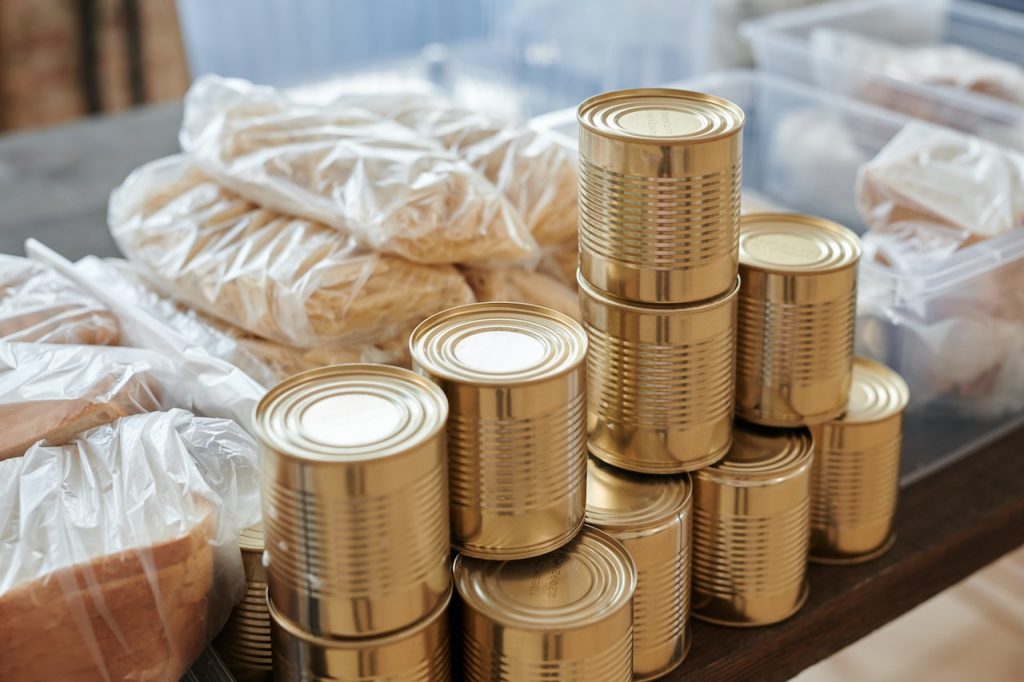Every boater’s got to eat! Maybe your cruiser’s kitchen boasts a full stovetop range. Or perhaps you’re chopping veggies on your lap on a small dayboat or fishing boat. Each person will also have their own recipes for cooking on a boat, and preferences and styles that might change with the seasons. However you cook on your boat, some solid gear and a larder-full of good advice will go a long way. The key is to find a balance between saving time and effort, money and space – as well as fresh water, fuel and electricity.
Plan ahead
Food for a boat can range from basic ready meals to freshly caught fish or multiple-pot extravaganzas. Whatever your boat meals, forward planning is crucial. At minimum, think ahead about which meals you’ll be preparing and always bring extra – both for safety reasons and for hungry passengers. Go one step further and pre-chop your veggies and meat, or even pre-cook and optionally freeze entire sauces or stews at home. Even if you enjoy onboard prep, it’s always good to have a backup. For longer trips and regular outings, keep an updated master list of your ingredients stocked onboard, so you never run out of salt again!

Keep it cool
Dry and preserved foods go a long way in boat cooking. But having some fresh, perishable ingredients always helps stave off culinary boredom (and scurvy), while a cold beer or soft drink is a panacea for a warm sailor. Larger boats with plenty of electricity generation might pack a full-size fridge, while others might prefer a classic cooler – saving electricity and taking advantage of many marinas’ provision of free or cheap ice. But many boats even go entirely without. If you do invest, consider your battery capacity, budget and – as always with cooking on a boat – space. Plus decide if you really need your fridge turned on for the full trip.

Gear and implements
In terms of other gear, there are countless boat cooking appliances and implements at every price point. First, heating and cooking. Gimbaled, rocking stoves (and sometimes ovens) often come standard on sailboats, while those on powerboats are usually fixed. For those lacking a galley entirely, do as campers do and use small propane stoves or even barbecues and grills purpose-built for boats. In any case, choose pots and pans that fit your cooker (and your cupboards), and ideally a pressure cooker – a great saver of fuel and time for easy one-pot meals. Otherwise, most onboard chefs should prioritise sealable bags for leftovers, good knives and a non-wooden chopping board to minimise mould and bacteria. And don’t forget to go eco with cleaning products.

Save space
Much gear can also help you save space: pans with folding handles, stackable bowls and ingenious collapsible implements. But there are also ways to be smart without breaking the bank. In case of multiple-pot meals but limited stovetop space, be prepared to cook in steps and reheat later. Wash up as you go to avoid filling small boat sinks. And manage your fridge or icebox carefully: to minimise cooldown from opening doors and lids, add and remove items in batches, and try to keep items soonest to use easiest to hand. Finally, find a spot apart from the stove and kids where sous-chefs can chop, keeping knives safely out of the way.

Ultimately, make your eating experience your own. From easy meals to cook on a boat to veritable marine feasts, find gear and a rhythm to fit you. And if you’re ready to upgrade, or you’re yet to buy your boat, consider those preferences when it comes to onboard space and utilities.
Images: Julia M. Cameron Pexels / Sandrene Zhang Unsplash / Federico Garcia Unsplash / Tom Crew Unsplash


